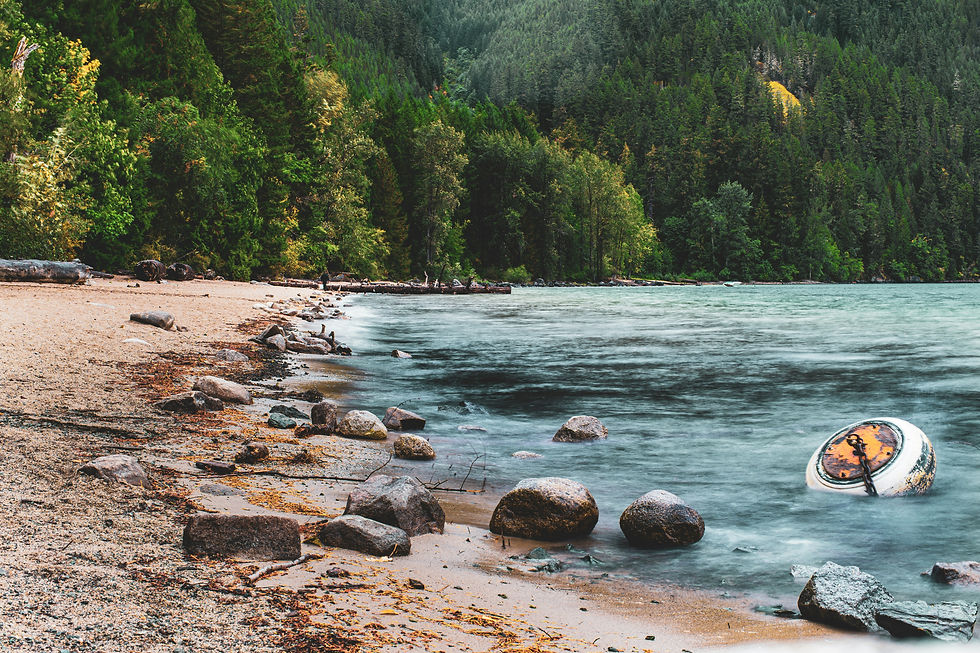Beginner's Guide to Stand-Up Paddleboarding Tips for Your First Adventure
- sasquatch outdoor rentals
- May 19
- 4 min read
Stand-up paddleboarding (SUP) offers a unique blend of adventure and fitness, allowing you to explore nature while getting a great workout. If you're about to step onto a board for the first time, you might feel a mix of excitement and nervousness. However, with the right preparation and mindset, your first paddleboarding experience can be both enjoyable and memorable. This guide will share key tips for a successful journey on the water, emphasizing safety, equipment choices, balance techniques, and the numerous benefits of paddleboarding.
Understanding Paddleboarding Basics
Before you hit the water, it’s essential to understand the fundamentals of stand-up paddleboarding. In SUP, you stand on a wide, stable board and use a paddle to maneuver through the water. Paddleboarding is incredibly versatile; it can be enjoyed on serene lakes, flowing rivers, or vast oceans. So far we have tried all the options and always there are some lesson to share.
As you prepare to paddle, think about your comfort level around water and the type of experience you wish to have. Most beginners find calm and flat waters easiest to navigate (and I agree, is better to start here to build confidence). For instance, places like local lakes are perfect as they usually provide a peaceful environment with minimal waves and currents.
Safety First: Essential Tips
Wear a Personal Flotation Device
Safety should always come first. A properly fitted personal flotation device (PFD) is crucial for all SUP enthusiasts, particularly those trying it for the first time. Make sure your PFD is comfortable, complies with local regulations, and is worn at all times.
Check the Weather Conditions
Always check the weather forecast before heading out. Avoid days with high winds, rain, or lightning warnings for a safer paddling experience. For example, a day with wind speeds under 10 miles per hour is ideal for beginners.
Stay Aware of Your Surroundings
Being aware of your surroundings is essential. Watch out for other watercraft, including boats and jet skis, as well as swimmers. Look for designated paddleboarding zones to help avoid busy areas. This awareness helps reduce the risk of accidents and ensures everyone enjoys the water safely.

Choosing the Right Equipment and Gear
Selecting Your Paddleboard
For beginners, stability is key. Inflatable paddleboards are particularly advantageous for first-timers. They are more forgiving and easier to handle. To put it in perspective, studies show that beginners on inflatable boards reported a 25% increase in confidence and enjoyment compared to rigid boards.
Picking the Right Paddle
Your paddle should be between 6 to 8 inches taller than you when standing on the board. This height allows for effective and comfortable strokes while maintaining control and power.
Dress Appropriately
Wear comfortable clothing suited for movement and expect to get wet. A swimsuit, rash guard, or quick-dry attire works perfectly. Additionally, sun protection is crucial; applying sunscreen or wearing a hat can help shield you from those harmful rays, especially if you plan to be out for hours.
Techniques for Balance and Navigation
Finding Your Balance
Begin by kneeling on your paddleboard for better stability before standing up. Once you're comfortable, place your feet shoulder-width apart and keep your knees slightly bent to help maintain your center of gravity. Engaging your core is essential for stability while paddling.
Proper Paddling Technique
Hold the paddle with one hand on the T-grip and the other on the shaft. To maximize strength and efficiency, rotate your shoulders instead of just using your arms when you paddle. For turning, paddle harder on one side and sweep back in a broad arc. A consistent rhythm will also help you maintain speed and control.
Relax and Enjoy
Look ahead to your destination rather than down at the board. This perspective aids in maintaining balance and reduce any chance to get dizzy. Embrace the scenery, enjoy the sound of the water, and take deep breaths to stay relaxed as you paddle forward.
The Benefits of Stand-Up Paddleboarding
Paddleboarding offers more than just fun; it’s an excellent full-body workout. It engages various muscle groups, increasing core strength, balance, and endurance. Research indicates that a typical hour of paddleboarding can burn around 400-600 calories, making it a fantastic exercise choice.
Moreover, paddleboarding provides a unique opportunity to connect with nature. The calming sounds of water and beautiful scenery foster relaxation, helping to reduce stress levels. According to surveys, 90% of paddleboarders reported feeling more relaxed after spending time on the water.
Your First Adventure Awaits
Your first stand-up paddleboarding experience doesn’t need to feel overwhelming. By prioritizing safety, selecting the right equipment, and practicing essential techniques, you can fully enjoy the peace and beauty that paddleboarding brings.
There is a fantastic adventure awaiting you on the water! With practice and perseverance, you'll soon paddle with confidence, ready for new challenges and experiences ahead.

Whether you're seeking fun, fitness, or a peaceful day on the water, stand-up paddleboarding has something to offer everyone. Grab your board and start your paddleboarding journey today!



Comments